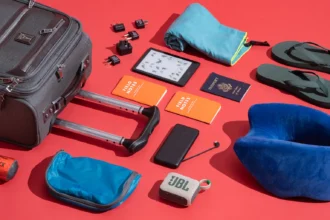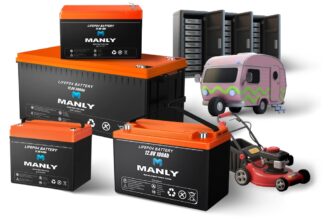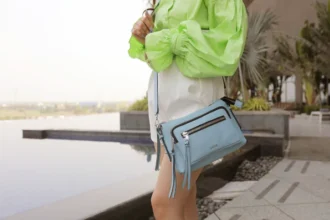Introduction
In every industry—from bustling restaurants to high-tech laboratories—the way employees dress influences first impressions, productivity, and safety. A well-designed Staff Uniform is therefore more than matching garments; it is an essential business tool that merges brand storytelling, functionality, and team morale.
The Power of First Impressions
Customers often judge a company within seconds of entering a space. Clean, cohesive uniforms signal professionalism and help guests identify who can assist them. Colours aligned with a corporate palette reinforce marketing campaigns, while thoughtful details—like unique buttons or subtle embroidery—communicate quality at a glance.
Enhancing Team Cohesion and Pride
Uniforms level visible socioeconomic differences, uniting employees under a shared mission. When everyone suits up, hierarchy fades and camaraderie rises. This sense of belonging boosts morale, reduces turnover, and encourages staff to hold one another to higher standards of presentation and performance.
Functionality Drives Productivity
A staff member who wrestles with ill-fitting trousers or hunts for tools in awkward pockets loses focus and time. Modern uniform programs emphasise:
- Task-specific fabrics – Moisture-wicking blends keep chefs cool, while flame-resistant textiles safeguard refinery technicians.
- Ergonomic design – Articulated knees, stretch panels, and strategic vents allow unrestricted movement.
- Smart storage – Hidden zips and reinforced pockets carry scanners, pens, or tablets without sagging or tearing.
By eliminating wardrobe distractions, employees can dedicate full attention to the task at hand.
Safety Comes First
In sectors such as healthcare, construction, and manufacturing, uniforms double as protective gear. High-visibility striping prevents roadside accidents; antimicrobial coatings reduce hospital infections; antistatic fibres avert sparks in microchip fabrication plants. A rigorous risk assessment should always precede fabric and feature selection.
Sustainability Matters
Consumers increasingly reward brands that reduce environmental footprints. Uniform programs can contribute by:
- Choosing eco-friendly textiles – Recycled polyester, organic cotton, and closed-loop fibres like TENCEL™ cut water and energy use.
- Extending garment life – Durable stitching and colourfast dyes keep items in service longer, lowering replacement rates.
- Implementing take-back schemes – Retired pieces can be shredded into insulation or re-spun into new yarn, closing the material loop.
Inclusivity in Fit and Style
A one-style-fits-all approach no longer meets today’s diversity standards. Offering multiple silhouettes (classic, tapered, maternity), a broad size range, and gender-neutral options ensures every team member feels respected and comfortable. Adjustable waistbands, expandable panels, and modular layers accommodate body changes and local climates alike.
Branding Beyond the Logo
While a conspicuous logo on the chest does the job, subtle branding often feels more premium. Tone-on-tone embroidery, signature piping, or a printed lining that reveals a company mantra when a jacket is opened can delight customers and strengthen internal culture simultaneously.
Digital Tools Streamline Rollouts
- 3D body-scan kiosks reduce sizing errors and costly returns.
- RFID tags track laundry cycles, helping facilities optimise inventory and prevent loss.
- Online dashboards allow managers to reorder replacements, monitor budgets, and assign garment allowances with a few clicks.
Technology turns uniform management from an administrative headache into a data-driven efficiency gain.
Case Study Snapshot
A regional hotel group recently replaced plain black suits with tailored charcoal jackets featuring a subtle teal stitch that echoes the lobby décor. Staff polls showed a 22 % rise in pride of appearance, while guest satisfaction scores for “staff helpfulness” climbed 15 %—evidence that confident employees translate style into service.
Best-Practice Checklist for Launching a New Program
- Engage frontline staff early to gather insights on comfort, pocket placement, and cultural sensitivities.
- Prototype and pilot garments with a small team; tweak fit or fabric based on real-world feedback.
- Phase deployment by department to catch supply-chain hitches before scaling.
- Educate on care—clear washing instructions preserve colour, shape, and protective coatings.
- Measure impact using metrics such as employee satisfaction, customer feedback, and uniform lifespan.
Future Trends to Watch
- Smart textiles embedding sensors that monitor body temperature or posture, alerting supervisors to fatigue.
- Augmented-reality fitting rooms enabling remote hires to “try on” uniforms virtually during onboarding.
- On-demand personalisation where regional hubs add names or role badges within hours, slashing lead times and excess stock.
Conclusion
A thoughtful staff uniform strategy weaves identity, safety, sustainability, and efficiency into every seam. By investing in quality design and inclusive fit—and by leveraging modern management tools—organisations can turn everyday workwear into a competitive advantage that speaks volumes to both employees and customers.

















